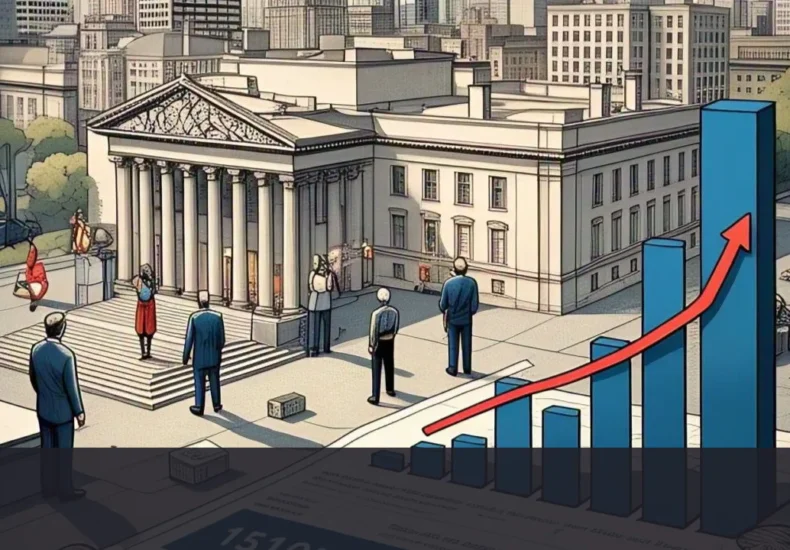
Job Growth Stumbles: U.S. Adds 151,000 Jobs Amid Federal Workforce Cuts
The U.S. job market continues to show signs of resilience, but February’s employment report fell short of expectations. According to the latest data from the Bureau of Labor Statistics (BLS), the U.S. added 151,000 jobs in February 2025—a notable slowdown compared to previous months. Economists had projected a gain of around 180,000 to 200,000 jobs, making this a disappointing report.
One of the most significant takeaways from the report is the decline in federal government employment, contributing to the weaker-than-expected job growth. Meanwhile, private-sector hiring remained steady, with healthcare, hospitality, and construction showing gains, while retail and technology sectors saw mixed results.
Federal Workforce Decline Impacts Job Growth
One of the biggest factors behind the underwhelming job growth is the shrinking federal workforce. Over the past year, the government sector has shed thousands of jobs due to budget constraints, hiring freezes, and efficiency measures.
Several key reasons for the decline include:
- Government budget cuts affecting hiring and retention.
- Automation and AI implementation reducing the need for administrative roles.
- A wave of retirements without sufficient replacements.
- Remote work policies leading to restructuring in various federal agencies.
While state and local governments added some jobs, they weren’t enough to offset the losses at the federal level.

Federal Job Cuts Weigh on U.S. Job Market as Hiring Misses Expectations
Which Sectors Saw Job Growth?
Despite the slowdown, several industries continued to add jobs, keeping the labor market stable. The top-performing sectors in February included:
1. Healthcare (+46,000 jobs)
- Hospitals and outpatient care facilities drove most of the gains.
- Rising demand for medical professionals due to an aging population.
2. Construction (+22,000 jobs)
- Residential and commercial construction projects continued expanding.
- Increased government investment in infrastructure played a role.
3. Hospitality & Leisure (+34,000 jobs)
- Restaurants, bars, and hotels benefitted from a steady rise in consumer spending.
- Tourism and travel showed sustained recovery from the pandemic.
4. Professional & Business Services (+18,000 jobs)
- Hiring remained strong in consulting, finance, and engineering.
Sectors with Job Losses:
Not all industries saw growth in February. Some sectors struggled:
- Retail (-12,000 jobs): Declining store traffic and shifts to e-commerce impacted hiring.
- Technology (-9,000 jobs): Large tech firms continued layoffs, adjusting to economic uncertainty.
- Manufacturing (-8,000 jobs): Factory output slowed due to weaker demand and supply chain challenges.
Unemployment Rate Holds Steady at 3.9%
While job creation was lower than expected, the unemployment rate remained stable at 3.9%, suggesting that the labor market is not in crisis. However, wage growth slowed slightly, indicating a more balanced market where employers have less pressure to raise wages to attract workers.
What This Means for the U.S. Economy
The latest job report signals a moderating labor market, which could have significant implications for the broader economy:
-
Fed’s Interest Rate Decisions:
- Slower job growth could increase pressure on the Federal Reserve to cut interest rates.
- Lower inflationary pressures might prompt an earlier rate reduction in 2025.
-
Stock Market Reaction:
- Investors may see mixed signals—steady but slowing job growth could mean a cautious outlook.
- Tech and retail stocks may face pressure, while healthcare and construction remain strong.
-
Consumer Confidence:
- Stable unemployment suggests no immediate recession concerns, but slower hiring could impact wage growth and spending habits.
Conclusion: A Cooling but Resilient Job Market
The February U.S. jobs report shows that while hiring is still positive, the pace is slowing, largely due to a shrinking federal workforce and sector-specific struggles. However, with unemployment still low and private-sector hiring ongoing, the job market remains stable for now.
As economic conditions evolve, all eyes will be on the Federal Reserve, policymakers, and businesses to see how they respond to the shifting employment landscape. Will job growth rebound in March, or is a further slowdown ahead?
See this Videos:
You may also like
Archives
Calendar
| M | T | W | T | F | S | S |
|---|---|---|---|---|---|---|
| 1 | 2 | 3 | ||||
| 4 | 5 | 6 | 7 | 8 | 9 | 10 |
| 11 | 12 | 13 | 14 | 15 | 16 | 17 |
| 18 | 19 | 20 | 21 | 22 | 23 | 24 |
| 25 | 26 | 27 | 28 | 29 | 30 | 31 |



















Leave a Reply